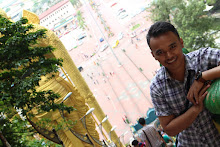In the other hand, I really feel comfortable when my teacher invites the students to study out from the classroom. I think it would be better if learning can happen outdoor, we can be closer to the nature and study with everything surrounds us. Teaching in outdoor make me more relax and unlimited by classroom spaces. Sometime I think if I were a teacher I will develop a lesson by using a bodily kinesthetic and nature intelligence approaches and also integrating technology on it, because I really love to work with using technology especially my computer.
What kind of multiple intelligence learners are you?
Total Physical Response
What Kind of Teaching Language Approach That Indonesia Need?
I personally think that Art craft conception is the most suitable method to be applied in Indonesian context. Why? Because this method is not aim only for increasing student’s grade on studying language, but this method tend to be more understand that students have a different way of learning. In this field, teachers are not limited on teaching approach which is already there but they can develop their own approach. It means that teacher also become as a part of learning process, they learn how to teach students in different circumstances. I emphasize that every single students have a different way of learning. So, the teaching approaches which already there are not always appropriate while it is used in every situation.
You can imagine, in Indonesia we have almost 40 students in a classroom. It means that we have a big class here. For example, if we used some theory like audiolingualism or silent way it will not support the learning process can be interesting. In audiolingualism which has approach drill and practice, not every student gets their turn to practice in a class except the one who become the volunteer. In this case, through science art conceptions teacher can develop their own approach to solve this problem according to their own perspective as the teacher. I think this method will encourage teacher to think out the box and increase their creativity. I conclude that Art craft conceptions will help a lot if it is applied in Indonesia.
Another reason to apply this approach in indonesia is we need a learning process that aim to a local context. As long as i have studied english in formal school, student's handbook always took a studycase from other country depends on the who is the author of the book. Unfortunately, this case sometime is not appropriate when it is applied in indonesia context, different country will have a different phenomena and culture. As Prof. Kasihani said that we need to learn second language through a contextual learning or we learn a knowledge through some phenomena which is happen arround us.
Art craft conception is related to contextual learning. By using art craft conception, teacher can develop their own approach to use contextual learning. it can make student understand the lesson easily with something happen around them.









